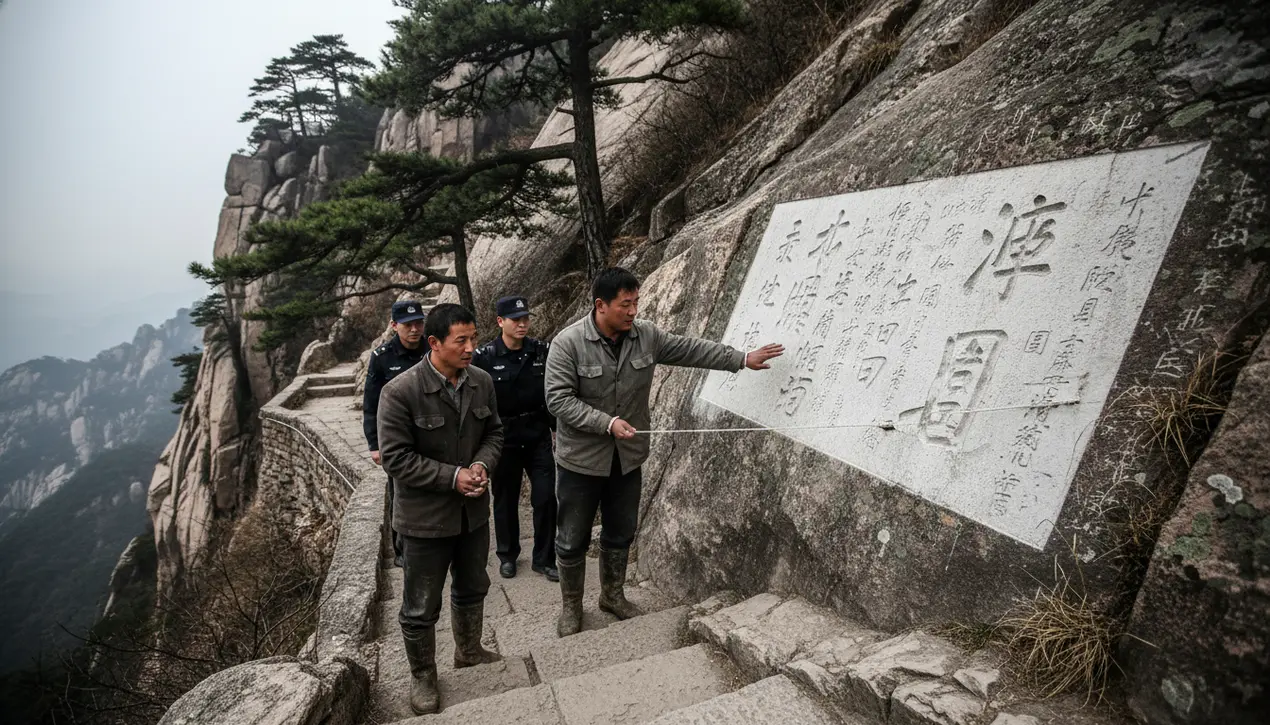
SciencearchaeologyCultural Heritage
Men Carve Words on Mount Tai to Change Their Fate
RA
Rachel Adams
2 hours ago7 min read1 comments
In an act that chillingly echoes the slow erosion of our natural heritage, two individuals were apprehended for systematically carving words and their names across 35 distinct historical sites on China's revered Mount Tai in a single, devastating day. Their defense, a claim that they sought to 'change their fate' through this vandalism, reveals a profound and troubling disconnect between personal superstition and collective responsibility, a conflict playing out on a global scale as cultural landmarks face increasing threats from both human ignorance and environmental decay.Mount Tai, or Taishan, is no mere mountain; it is one of China's Five Great Mountains, a UNESCO World Heritage Site that has been a sacred destination for imperial pilgrimages and spiritual seekers for over three millennia, its stones imbued with the prayers of emperors and the footsteps of philosophers like Confucius. The deliberate scarring of this living monument with contemporary graffiti isn't just a crime against Chinese law—it's a wound to human history, a point starkly emphasized by the Supreme People’s Court’s decision to publicize the case on the anniversary of the strengthened Cultural Relics Protection Law, using it as a stark lesson in national consciousness.This incident is not isolated; from the initials scratched into the Colosseum in Rome by tourists seeking immortality to the acid attacks on ancient temples in Cambodia, we are witnessing a pandemic of disregard, where the desire for a personal legacy actively destroys the legacies we all share. The psychology is complex, rooted in a deep-seated human need to be remembered, to leave a mark, but it tragically misplaces that impulse onto the very artifacts that have already endured to remember us all.Experts in cultural heritage law point to the revised legislation as a critical step, potentially allowing for harsher penalties that could include significant fines and imprisonment, moving beyond simple reprimands to convey the true cost of such destruction. However, legal deterrence is only one pillar; the other, more challenging one, is education and fostering a genuine, empathetic connection to these sites, teaching that their preservation is not an abstract bureaucratic goal but a duty to future generations.The consequences ripple outward: each defacement diminishes the site's authenticity, potentially impacting its UNESCO status, devaluing the experience for millions of future visitors, and severing a tangible link to our shared past. The men’s attempt to alter their personal destiny, therefore, came at the direct expense of a universal cultural destiny, a selfish calculus that underscores a broader ecological and ethical crisis where short-term individual gratification is prioritized over long-term planetary and historical health. The true change of fate we must now engineer is a societal one—a shift from seeing these places as picturesque backdrops for our lives to recognizing them as fragile, irreplaceable protagonists in the ongoing story of humanity, demanding our utmost respect and protection.
#cultural heritage
#vandalism
#Mount Tai
#law enforcement
#Supreme People's Court
#lead focus news
Stay Informed. Act Smarter.
Get weekly highlights, major headlines, and expert insights — then put your knowledge to work in our live prediction markets.
Comments
Loading comments...
© 2025 Outpoll Service LTD. All rights reserved.